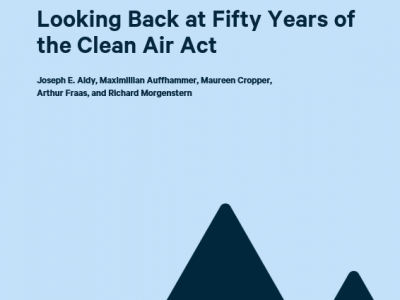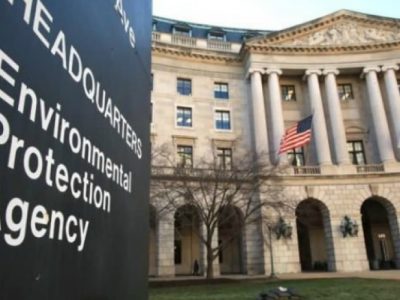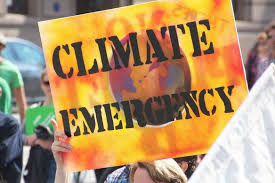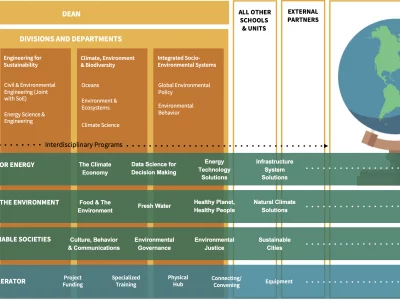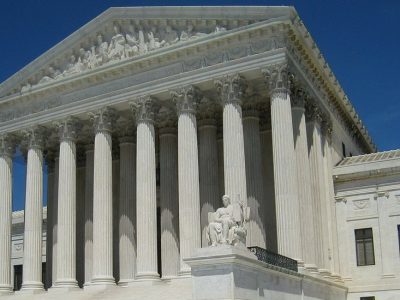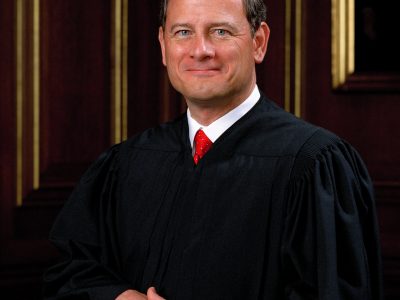Climate Adaptation Moves Toward Center Stage
There’s an increasing bipartisan move to fund climate resilience.
The big news today is the deal with Manchin to provide billions of dollars of funding for clean energy. Manchin's vote will be needed because no Republican Senator will vote for the bill. In contrast, funding for climate resilience has drawing power even for Republicans. It seems to be true that, in Bob Dylan’s words “you don’t need a weatherman to know which way the wind blows.” You don’t even need a climate modeler. The need for adaptation has becomi...
CONTINUE READINGTaking A Data-Driven Tour of Air Pollution Law
After Half a Century, What Do We Really Know about the Impacts of the Clean Air Act?
Earlier this year, a team of economists published a retrospective paper on the Clean Air Act. It surveys the economic literature to find out what the data tells us about emission trading systems, the effects of pollutants, and effects of imposing tougher regulatory requirements in areas that failed to meet national air quality standards. Some of the findings are not surprises: stricter regulations actually do result in improved air quality. Others are more surprising. Th...
CONTINUE READINGWhat the Supreme Court Left Standing
No, the Court didn't eliminate EPA's ability to fight climate change.
The Supreme Court’s ruling in the West Virginia case left many people with the impression that it eliminated the government’s power to regulate carbon emissions. There are quite a number of areas of climate law that the Supreme Court has left untouched. Here’s the EPA authority the Court hasn't touched: EPA’s jurisdiction over greenhouse gases. There was some worry that the Court might overrule Massachusetts v. EPA, which gave EPA authority to regulate gree...
CONTINUE READINGDeclaring a Climate Change Emergency: A Citizen’s Guide
Would it be legal to declare a national emergency for climate change? Would it be useful? Here's what you need to know.
Based on press reports, it now seems likely that Biden will soon declare climate change to be a national emergency. Would this be legal? Would it unlock important powers that could be used to fight climate change? My answers are: It would probably be legal, and it would unlock some significant powers. But an emergency declaration is not a magic wand that gives Presidents a blank check. It would allow some constructive steps to be taken, but within limits. I wrote ...
CONTINUE READINGStanford’s Sustainability School: A Good Model?
There are pros and cons, but it makes sense to bring the university org. chart into the 21st century.
In my last post, I wrote about universities like Stanford that are creating new programs in sustainability. Stanford's move may inspire others to follow. There are pros and cons, but it seems inevitable that the organization of universities will ultimately take account of one of the biggest problems facing humanity. Administrative reorganizations, whether in government, business, or the academy, are always difficult and costly, often taking years before the rearra...
CONTINUE READINGStanford and Beyond
Organizing Universities Around Sustainability
In May, Stanford grabbed headlines by announcing a billion dollar gift to launch a new School of Sustainability. There hasn’t been much written about the details of Stanford’s effort, or about what other schools are doing along similar lines. There’s little in the way of systematic information, but there does seem to be a lot of ferment in the area. I want to begin by lamenting the lack of systematic information. A lot has been written about the efforts of unive...
CONTINUE READINGClimate Change and the Major Question Doctrine
Just because a regulation involves climate change, that doesn’t make it a major question.
Red State AGs are preparing to go to town with the West Virginia case. They seem to think that everything involving climate change automatically becomes a major question. That’s simply wrong. The doctrine is more nuanced. Recall that the Supreme Court struck down OSHA’s vaccine mandate, essentially on major questions grounds, but the majority found an HHS vaccine mandate for health workers unobjectionable. It all depends on the statutory context, agency practice, and...
CONTINUE READINGMaking Heat Pumps Accessible and Affordable to Decarbonize Buildings
New policy report on solutions to improve deployment of heat pump technologies in existing buildings | Webinar July 19
Join us for a webinar to discuss the report findings with leaders on July 19 at 1 pm PT. RSVP here You may have seen heat pumps (or #heatpumpnation) in the news recently and wondered, what really is this device? How do heat pumps relate to building decarbonization goals, national security, and climate mitigation efforts? Well, heat pumps are having a moment. As the state moves toward all-electric buildings, replacing older gas-powered furnaces and air conditioning ...
CONTINUE READINGEmerging Answers to Major Questions
We’re beginning to get a clearer understanding of the major questions doctrine.
In November, I wrote a post posing “some major questions about the major questions doctrine.” In West Virginia v. EPA, Chief Justice Roberts starts supplying some answers to those questions. In particular, he seems to be using a narrower four-factor approach to decide what constitutes a “major question.” As we all know, the West Virginia case involved the Obama Administration's signature climate change regulation, the Clean Power Plan. The Court rejected ...
CONTINUE READINGThe Battle for the Senate: A Challenging Year for Democrats
Democrats may hold onto the Senate, but it’s going to be a tough fight.
We’re now four months out from election day. This is not looking like a good electoral cycle for the Democrats, given inflation, the continuing effects of COVID, the economic impact of the war in Ukraine, and other woes. Democrats do have a fair chance of holding control of the Senate however, depending on how they run individual races and whether there’s any improvement in public opinion on Biden. The impact of the Supreme Court's abortion ruling on the elect...
CONTINUE READING




